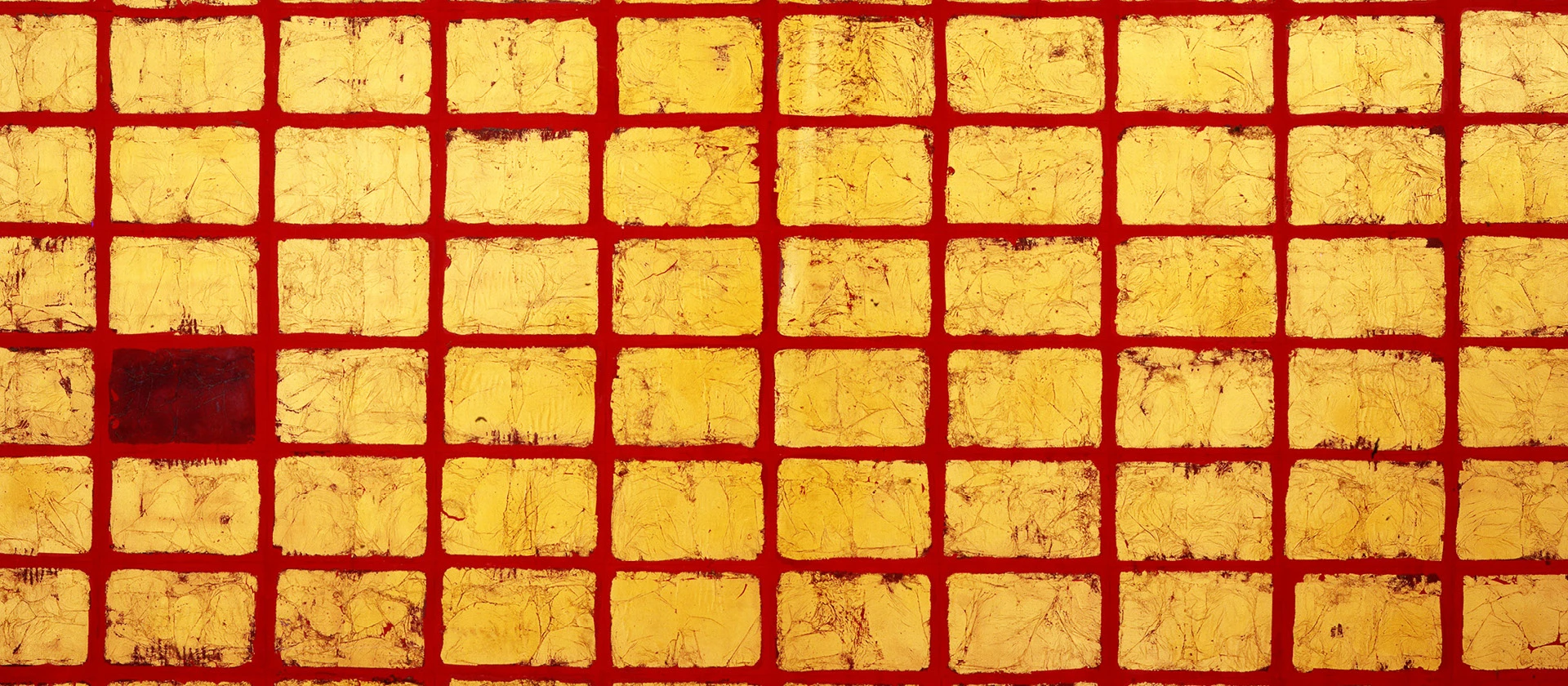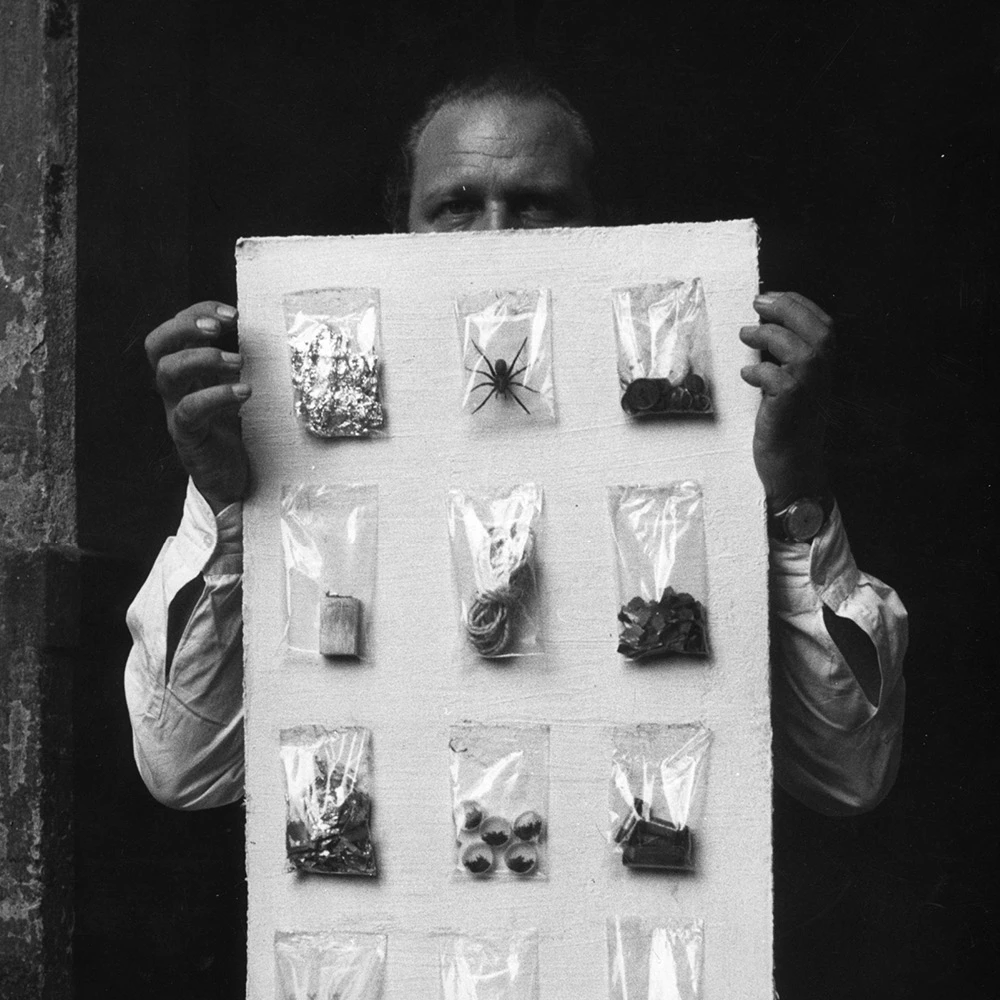Remo Bianchi (known as Bianco) was born in Milan in 1922 to Guido Bianchi, an anarchic electrician working at the Teatro alla Scala, and Giovanna Ripamonti, an astrologer and fortune-teller. In 1937, he enrolled into evening drawing classes at the Brera Academy, where he met Filippo de Pisis and began attending his studio assiduously. In 1941, during World War II, he was drafted as a machine-gun pointer aboard a destroyer. Following a shipwreck, he was rescued by English troops and interned in Tunis, whose light, colours, mosaics and ceramics remained sources of inspiration throughout his entire life. Bianco returned to Milan in 1944, when he devoted himself to art entirely.
In the early 1950s, during a visit to Filippo de Pisis at Villa Fiorita in Brugherio, Bianco met the entrepreneur Virgilio Gianni, who became his lifelong supporter, collector, and friend. In 1952, Bianco started an enduring relationship with the Cardazzo brothers. In October, Carlo Cardazzo gave Bianco his first solo exhibition, which opened at the Galleria del Cavallino in Venice with a selection of the artist’s Spatial and Nuclear works. Bianco’s investigation of space characterised his first 3Ds, which he exhibited in Milan at the Galleria Montenapoleone in 1953, with a catalogue introduction by Lucio Fontana. In 1954, Bianco presented his 3Ds at Cardazzo’s Galleria del Naviglio in Milan, and started experimenting with the Impronte (Imprints) and the Sacchettini-Testimonianze (Little Bags-Testimonies). In 1955, Bianco set off to the United States thanks to a grant from a group of Milanese industrialist-collectors, Gianni included, where he met the American artists Jackson Pollock and Franz Kline, among others. In June, Bianco exhibited his 3Ds at the New York Village Arts Center. One of his works was acquired by The Museum of Modern Art in Chicago. In 1956, Bianco wrote the Manifesto dell’Arte Improntale (Manifesto of Imprint Art) and started working on the Tableaux dorés, which he exhibited for the first time at the Cavallino in 1961. This became the most long-lasting and successful series by the artist.
In April 1960, Bianco had his first solo show in Paris at the Galerie de Beaune. Following a trip to Iran, he produced the Pagode(Pagodas). Presented in the exhibition Ricordi di un Viaggio in Oriente, organised by the Cavallino at the Venice Casino, they were praised by Giorgio de Chirico. In 1962, Alain Jouffroy wrote the first monograph on Bianco, published by the Edizioni del Cavallino. In 1964, Bianco exhibited his Sacchettini and Impronte at the Naviglio. At the Cavallino, he staged his first performance, where he presented the Quadri viventi (Living pictures). He wrote the Manifesto della Sovrastruttura (Manifesto of Superstructure) and began the Sovrastrutturali (Superstructures) series, which included Bianco’s Sculture neve (Snow sculptures), Sculturecalde (Warm sculptures) and the Trafitture (Pierced works). The cycle also included the Appropriazioni (Appropriations), a series of posters, photos, magazine clippings, flags and reproductions of paintings by other artists overlapped with a module of gilded rectangles. In April 1969, Bianco had a solo show at the New York Galerie des Deux Mondes (the TWA gallery) at John F. Kennedy International Airport. In the same year, Bianco staged a performance at the Galleria Vismara in Milan, where he distributed an edible 3D to visitors and offered sangria to passers-by and drivers going through Via Brera.
During the 1970s, Bianco continued exploring performance art. In 1972, he presented the performances Remo Bianco idea per una scala, in which he displayed the stages of his life on each step of a staircase, and Sadico mistico elementare at the Teatro Angelicum in Milan, where he attempted to portray himself in three situations representing aspects of contemporary reality. In the 1970s, Bianco also consolidated his relations with the Parisian milieu, particularly with the art critic Pierre Restany, who wrote the introduction to the exhibition dedicated to the Quadri parlanti (Talking pictures) at the Galerie Lara Vincy in 1976. There, in 1979, Bianco presented the cycle La gioia di vivere (The joy of living) and his Bandiere (Flags). In 1983, the Museo delle Albere di Trento organised Bianco’s first anthological exhibition.
On 4 June 1987, Bianco attended the vernissage of his last show Bandiere-Drapeaux at the Galerie Lara Vincy in Paris. He died in Milan on 23 February 1988.

